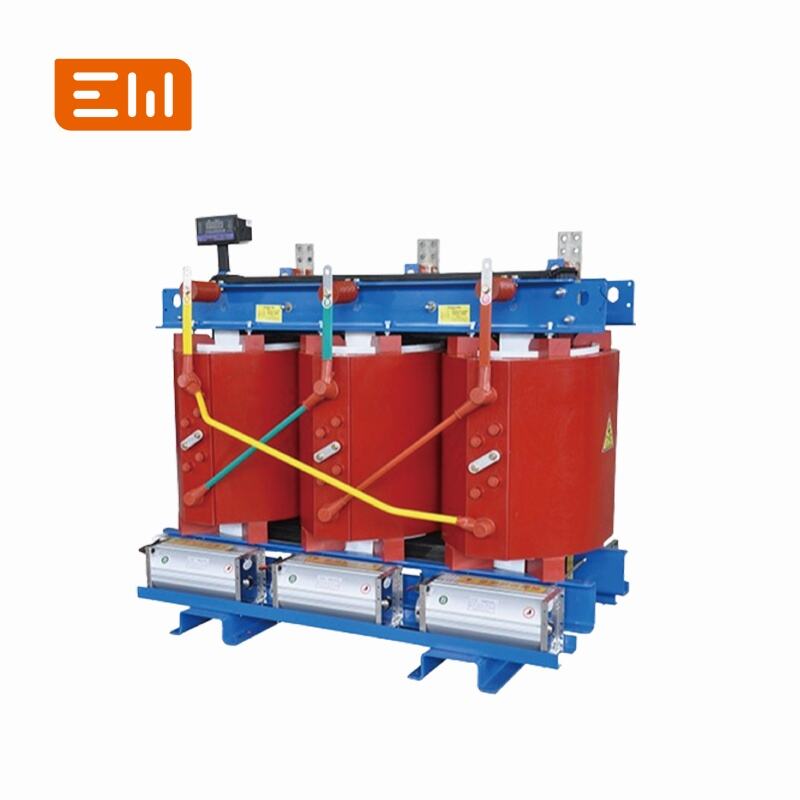How to Choose the Right kVA Rating for Your Dry Type Transformer
Selecting the correct kVA (kilovolt-ampere) rating is the most critical step in sizing a dry type transformer for your project. Choosing a rating that is too small will lead to overloads and premature failure, while over-sizing results in unnecessary expense and lower efficiency. This practical guide will walk you through the steps to accurately determine the right kVA rating for your needs.
What is a kVA Rating?
The kVA rating of a transformer represents its "apparent power" capacity. It tells you the maximum amount of power the transformer can handle continuously without overheating. It is a measure of electrical load that combines both the real power (kW) and reactive power (kVAR) of a system. For more details on this and other key parameters, see our Complete Technical Guide to Specifications.
Why is Choosing the Right kVA So Crucial?
- Under-sizing Risk: A transformer with too low a kVA rating will constantly run hot, leading to insulation breakdown, reduced lifespan, and potential catastrophic failure. It will also cause voltage drops, affecting the performance of connected equipment.
- Over-sizing Cost: A transformer that is too large for the load will operate inefficiently, wasting energy through higher no-load losses. It also represents a significant and unnecessary upfront capital expense.
A Step-by-Step Guide to Calculating Your kVA Requirement
Step 1: List All Electrical Loads
Begin by creating a comprehensive list of every piece of equipment that the transformer will power. This includes lighting, machinery, HVAC systems, motors, computers, and any other electrical devices. For each device, find its power consumption, which is usually listed on its nameplate in watts (W), kilowatts (kW), volts (V), or amperes (A).
Step 2: Calculate the Apparent Power (VA) for Each Load
You need to convert the power consumption of each device into VA (volt-amperes).
- For Resistive Loads (like heaters, incandescent lights): The power factor is 1, so Watts = VA.
-
For Motor Loads (Inductive): Motors have a power factor less than 1 (typically 0.8-0.95). The nameplate may provide the VA or kVA rating directly. If it only gives Amps and Volts, the calculation is:
- Single-Phase VA = Volts x Amps
- Three-Phase VA = Volts x Amps x 1.732
Step 3: Sum the Total kVA
Add up the VA ratings for all the devices to get the total connected load in VA. Divide this number by 1,000 to get the total kVA.
Total kVA = Total VA / 1000
Step 4: Apply a Demand Factor (If Applicable)
Not all loads will be running at full capacity simultaneously. A demand factor is a percentage that represents the realistic peak load. For example, in an office building, it's unlikely that all lights, computers, and HVAC units will be running at 100% power at the exact same moment. Applying a demand factor (e.g., 80% or 0.8) can provide a more realistic load figure. However, for critical systems or small panels, it is often safer to assume a demand factor of 100%.
Step 5: Plan for Future Growth (The Buffer Rule)
This is a critical step that is often overlooked. Your power needs will likely increase over time. To avoid having to replace the transformer later, it is standard practice to add a growth buffer to your calculated load.
Recommended Future Growth Buffer: 20% to 25%
Final kVA = Total kVA x 1.25
Step 6: Select the Next Standard kVA Size
Transformers are manufactured in standard kVA sizes (e.g., 30, 45, 75, 112.5, 150, 225, 300, 500 kVA, etc.). After calculating your final kVA requirement, you must select the next highest standard size. For example, if your calculation results in a need for 85 kVA, you should choose the next standard size up, which might be 112.5 kVA.
Example Calculation
Let's say you are sizing a three-phase transformer for a small workshop.
-
Loads:
- Lighting: 5,000 VA
- Machinery (Motor Load): 40 Amps at 480V (three-phase)
- Outlets: 10,000 VA
- Calculate Motor VA: 480V x 40A x 1.732 = 33,254 VA
- Total VA: 5,000 VA (Lighting) + 33,254 VA (Machinery) + 10,000 VA (Outlets) = 48,254 VA
- Total kVA: 48,254 / 1000 = 48.25 kVA
- Add Future Growth (25%): 48.25 kVA x 1.25 = 60.3 kVA
- Select Standard Size: The next standard size up from 60.3 kVA is 75 kVA.
Therefore, a 75 kVA transformer would be the correct choice.
Conclusion: Size it Right, Once
Accurately determining the kVA rating is a crucial investment in the safety and longevity of your electrical system. By carefully listing your loads, calculating the total power, and planning for future growth, you can confidently select a dry type transformer that will serve your needs reliably for decades.
Enwei Electric offers a vast selection of https://www.enweielectric.com/products/transformers/dry-type-transformers">dry type transformers in all standard kVA ratings. If you are unsure about your calculations or have a complex load profile, our experts are here to help.
Need help sizing your transformer?
- https://www.enweielectric.com/contact-us">Contact our technical team for a free consultation.
- Explore our range of three-phase and single-phase dry type transformers to find the perfect fit.

